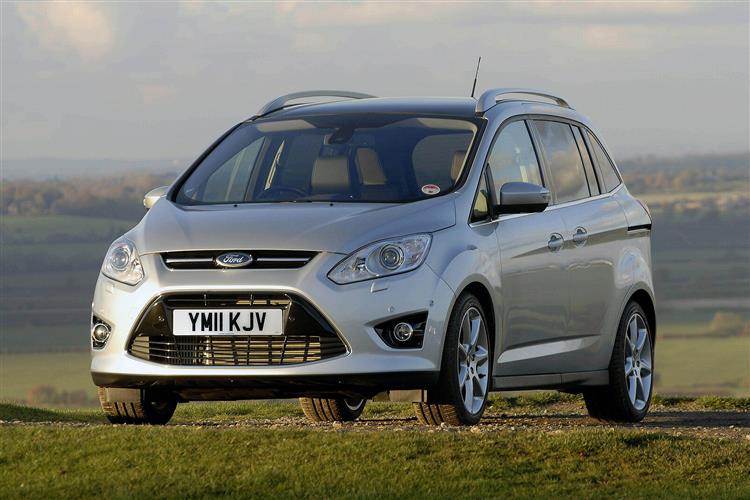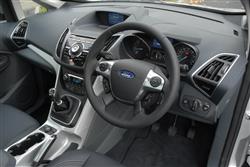This is a sample, showing 30 seconds of each section.
MAX FACTOR (some text hidden) SECTIONED_new_fordcmax_2010
By Andy Enright
Introductionword count: 109
The first generation version of Ford's five-seater C-MAX model was originally supposed to be offered with a seven-seat option but the Blue Oval brand got cold feet at the last minute and kept that car to just a couple of seating rows. It was a bad decision that cost the company plenty of sales in the compact MPV sector, so when the second generation C-MAX range arrived in 2010, it was inevitable that this oversight would be put right. So it proved, a 'Grand C-MAX' variant launched alongside the five-seat ordinary C-MAX variant. It's the Grand model we're going to check out here. Here's what to look out for.
Modelsword count: 12
5dr MPV (1.0, 1.6 petrol, 1.6, 2.0 diesel [Zetec, Titanium, Titanium X])
Historyword count: 262
Let's face it, Ford didn't exactly rush to get a seven-seat compact MPV into production. Vauxhall hit upon that winning formula with its seven-seat Zafira way back in 1999 and probably couldn't believe the fact that the Blue Oval let them have an unchallenged eleven year run at the European market for compact seven-seat MPVs. Still, all good things eventually come to an end and the Zafira was suddenly faced with quite the challenge when in 2010, Ford pulled the wraps off its Grand C-MAX. It certainly had the benefit of being able to observe where market trends were going and also how different rivals tackled the problem of packaging seven seats in a modest body length. The Grand C-MAX was spun off the second generation C-MAX platform, arriving in dealerships in October 2010. Buyers chose from either 105 or 125 PS versions of the 1.6i TI-VCT engine or a more powerful 150PS 1.6 Ecoboost petrol. Diesel customers were catered for with a 115PS 1.6-litre TDCi - or a 140PS 2.0-litre TDCi unit that came with the option of the excellent twin-clutch Powershift transmission. The range wasn't too difficult to get a handle on, with just Zetec and Titanium trims on offer, with plusher Titanium X spec subsequently being introduced. Customers were attracted to the upper-spec cars, with 65 per cent going for the Titanium trim and most attracted to the 1.6 TDCi 115PS powerplant. In October 2012, the 1.0-litre Ecoboost petrol engine was introduced to the Grand C-MAX range in 100 and 125PS guises. The range was facelifted in late 2014.
What You Getword count: 330
It's a while since we've been surprised by the looks of a Ford product but the 'kinetic design' themes that have been rolled out across the model range are far from unattractive, so we'll forgive the lack of adventure on the part of Blue Oval designers. By the standards set by other compact MPVs, which aren't always the highest, the Grand C-MAX is a handsome devil. Avid Ford watchers will recognise the trapezoidal grille, the swept back headlights and the sharp line around the bonnet and the flanks. The Grand C-MAX is fully 4,520mm long with a wheelbase increased by 140mm compared to the standard car. It's also 40mm taller and these extended dimensions allow it to cram in that third row of seating. The roof line is flatter and the window pillars are thinner to enhance the view out of the Grand C-MAX but the other major difference is that, while the C-MAX has conventional rear doors, the Grand C-MAX employs sliding doors on its flanks. This creates wider apertures for improved access to the rear seats and eliminates the risk of children clouting adjacent cars when they clamber out in the car park. The design inside looks slick. In line with the other modern Fords, there's plenty of metallic detailing and the quality of fit and finish seems high. It's the seats that will provoke the most interest however, as the designers clearly did a lot of work on maximising versatility. In the Grand C-MAX, the sliding side doors mean it's possible to access the third row without sliding or tilting the outer seats in the second row. There's also a clever feature where the centre seat in the second row can collapse under the right hand seat, giving a six-seater layout with walk-through access to the rear. Standard equipment on all models includes alloy wheels, air conditioning, leather steering wheel, a Thatcham category one alarm, a DAB radio/CD system and Bluetooth with USB connectivity and voice control.
To see the full road test text contact us on 0330 0020 227
Pictures (high res disabled)

.jpg)
|
.jpg)
|

|
Scoring (subset of scores)
Category: MPV People Carriers
| Performance | |
| Handling | |
| Comfort | |
| Space | |
| Styling, Build, Value, Equipment, Depreciation, Handling, Insurance and Total scores are available with our full data feed. | |





